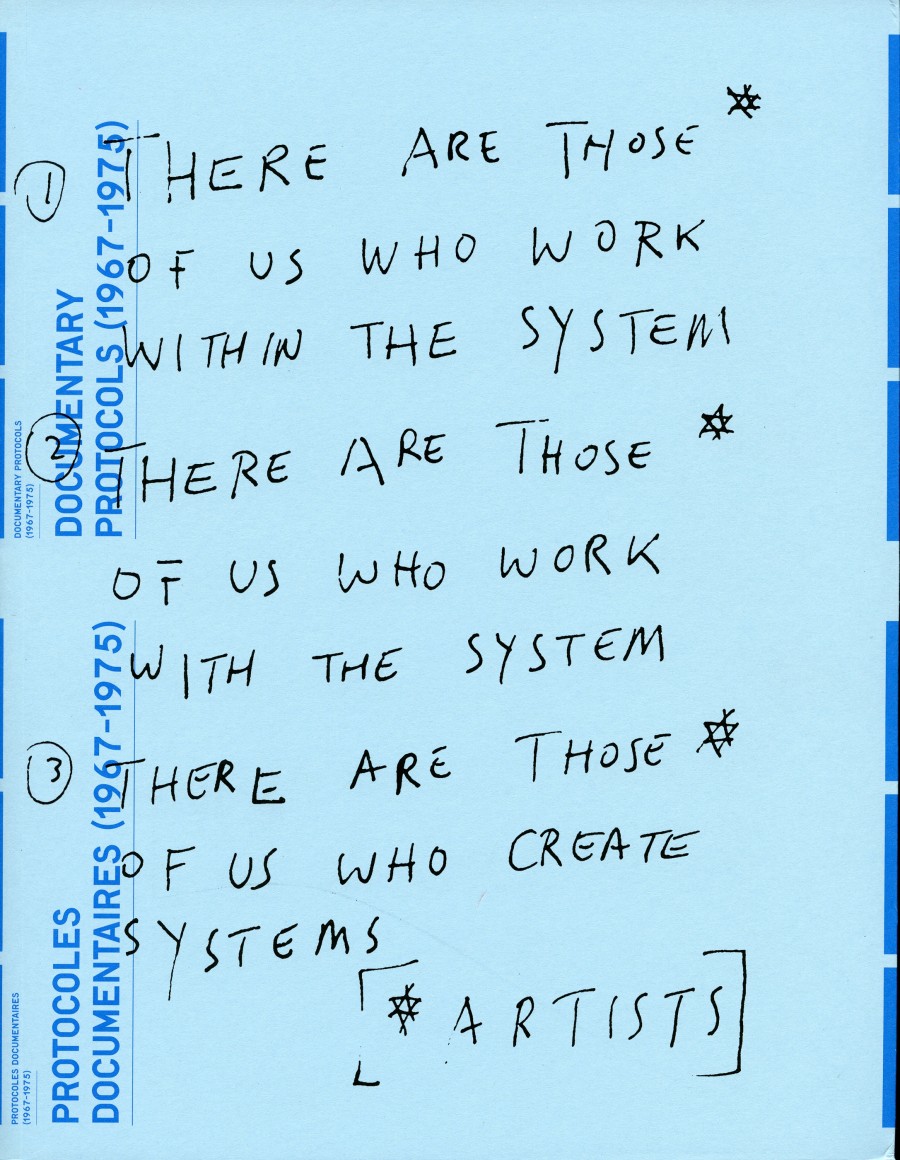Edited by Vincent Bonin with the collaboration of Michèle Thériault
Design: Feed
Documents: Art Workers’ Coalition, N.E. Thing Co., Joyce Wieland, Intermedia Society, A Space, Véhicule Art (Montréal) Inc., General Idea / Art Metropole, Image Bank, Western Front Society, Glenn Lewis, Michael Goldberg, Vidéographe
Introduction in English and French: Michèle Thériault
Essays by Vincent Bonin, Anne Bénichou, Marion Froger, Kristy A. Holmes, Primary Information, Felicity Tayler and David Tomas. Essays by V. Bonin, A. Bénichou and M. Froger also in French.
February 2010, Leonard & Bina Ellen Art Gallery
416 pp., b.w. illustrations
$40 (sewn perfect binding)
ISBN 978-2-920394-81-0
Prix Grafika 2011
Category: Books
The publication received a prize for the excellence of its graphic design.
Documentary Protocols (1967-1975) is the third part of an ambitious project that took place over a three-year period, and that also included two exhibitions (Documentary Protocols I and Documentary Protocols II) curated and presented at the Gallery in 2007 and 2008. This major historical publication reproduces over 250 documents from the 1960s and 70s drawn from 10 archival fonds and includes an introduction, a contextualizing essay and 6 case studies
In the mid-1960s, Canadian artists suffered from cultural isolation as museums were indifferent to their work and the international art market seemed beyond reach. Artists made up for this state of exclusion by creating alternative spaces in which they could present experimental work and offer services to members of their communities. Documentary Protocols (1967-1975) addresses a historical moment in which the investment of the concept of information by artists converged with the role of administrator they bestowed upon themselves. The historical trajectory of these self-managed organizations can now be observed in their archival fonds, where the results of partially realized utopias exist alongside material evidence of the artists’ labour. Following the decompartmentalization characterizing the period, the editorial structure of this publication provides equal visibility both to the sampling of documents and to the case studies based on the close reading of these items.










